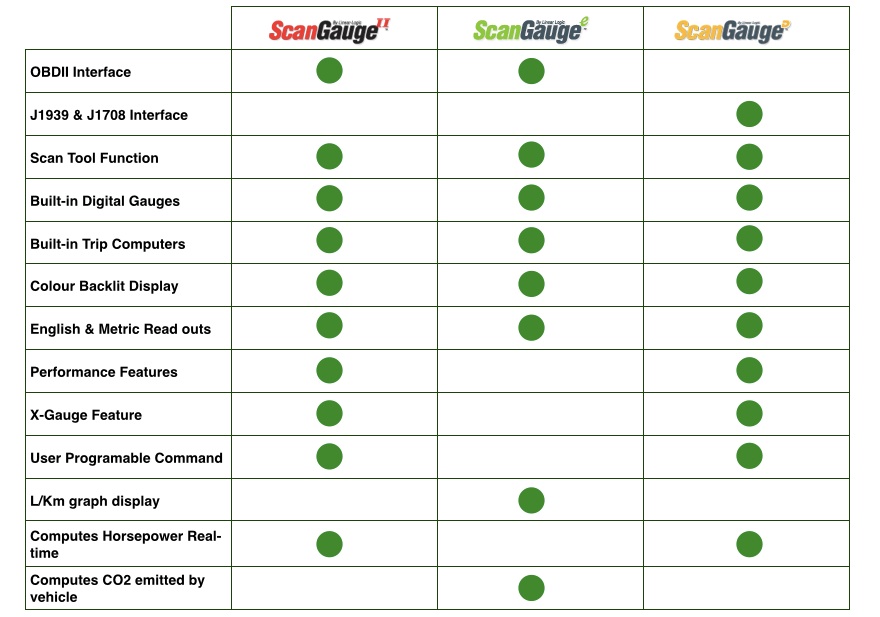

So how much are they, and is it worth it? Once you’ve got it mounted, plug the cable into the unit and the OBD2 port, and you’re away.

The hardest thing is working out where you’re going to mount it (it comes with double-sided tape and a Velcro tab for mounting) and hiding the wiring. Literally plug one end in to the OBD2 Port and the other end into the scan gauge and run wires… it’s that easy. Then those new gauges will be included in the standard gauge list – it’s as easy as that.
#SCANGAUGE XCODES HOW TO#
If you go and turn off or delete the DPF, you’re not going to have access to either of these.īut you’ll find all of the info on how to programme an X-Gauge in this link here which just involves looking up your make and model and adding a couple of alpha-numeric codes for your specific vehicle and gauge that you want. That said, your four-wheel drive must have the sensors onboard. What this does is allow you to program specific gauges into the unit, above and beyond the standard gauges. For example, Exhaust Gas Temperature (EGT) and Diesel Particulate Filter (DPF) loading readouts are able to be picked up by the ScanGauge II using the X-Gauge function. Something that really sets the ScanGauge II apart from the other cheaper knock offs on the market is the ability to program vehicle-specific stuff into it.
#SCANGAUGE XCODES CODE#
Once you’ve rectified the issue, you can then clear the code and be happily on your way, without needing to pay someone to clear the code for you. Once you’ve got a specific code (say P0102 for a HiLux is the Mass Air Flow (MAF) sensor code – #whatdustproblems?) you then google the code, work out what the issue is, and then change or clean that specific problem.

The other most significant feature is that you can read out trouble codes and clear those codes, and clear limp-mode on most four-wheel drives. This is how you do away with old school analogue gauges.

#SCANGAUGE XCODES MANUAL#
The OBD2 Port you’ll find it most likely under your steering column, but check your owner’s manual if you’re having trouble It will display four different sets of data at any one time on the screen, and you’re able to select between what’s displayed, and also programme more data sets in, like DPF loading and EGT numbers, but we’ll go into this further in the article. The unit itself has a simple monochrome LCD display and five buttons. While it can’t give you specific data on most of these things, it can tell you if sensor in question has an issue, such as the ABS sensor. Beyond just the engine, think things like the ABS sensors, the centre diff-lock and four-wheel drive (transfer case) actuators and the like. Essentially any sensor that sends a signal through to the ECU is readable and can be captured by the ScanGauge II. The biggest one we’re usually interested in is knowing what the engine is doing, and what data it’s sending on to the ECU. Simply put, the ScanGauge II is, on looks alone, a rather simple, small device that you can plug into the OBD2 port on your four-wheel drive, and it’ll give you all the data the vehicle sends to the ECU.


 0 kommentar(er)
0 kommentar(er)
